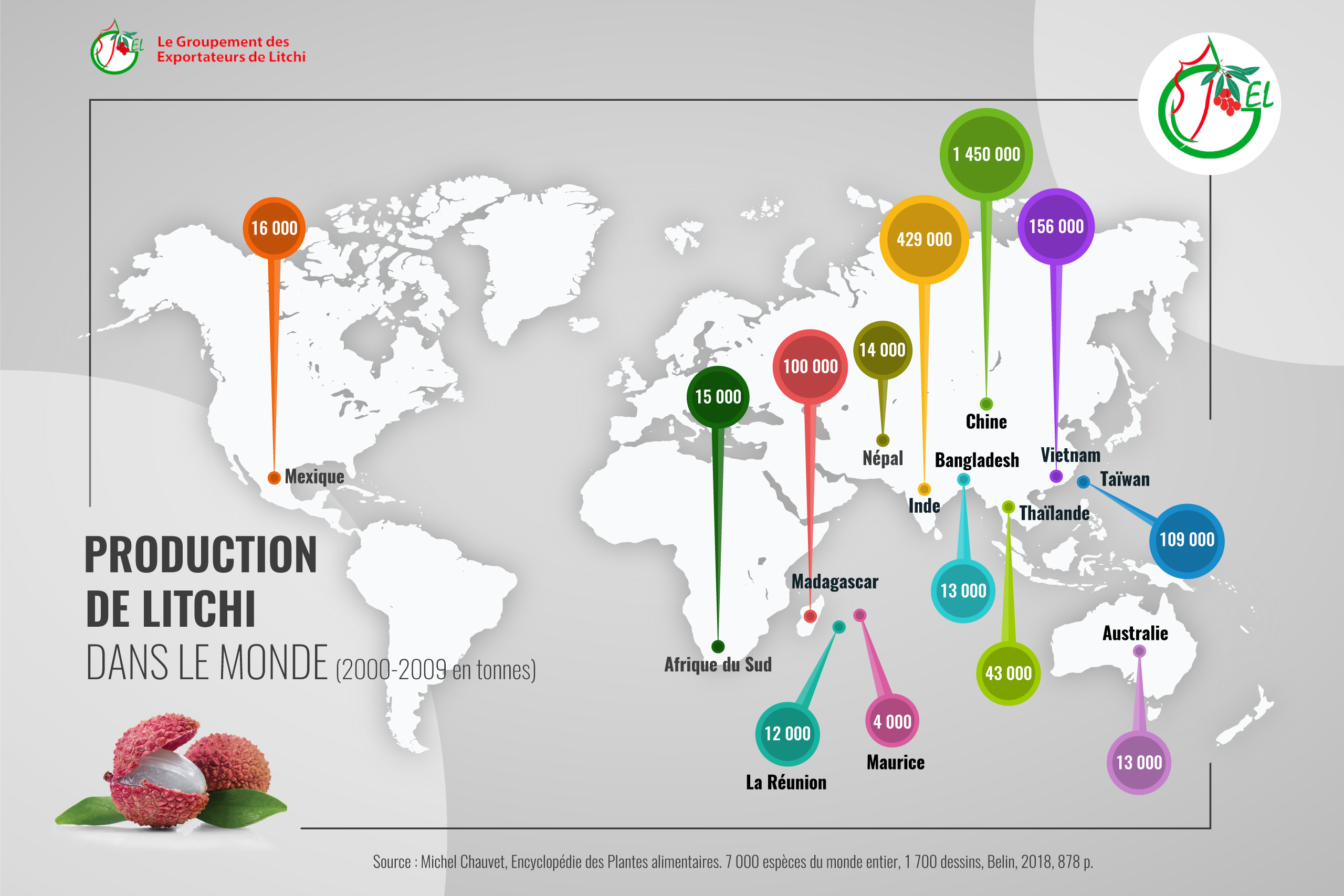Markets and development
Madagascar Lychee
Main producing countries
Originally from China, lychee is commercially cultivated in more than 20 countries around the world.
The main producing countries are China (2.5 million tonnes in 2020 on a total cultivated area of 533,000 hectares); followed by India (721,000 tonnes in 2019 on an area of 96,000 hectares); Vietnam, Taiwan and Madagascar (estimated 100,000 tonnes). To a lesser extent, Thailand, South Africa, the Reunion and Mauritius Islands, as well as other countries, also cultivate lychee.
Madagascar is therefore the leading producer of lychees in the southern hemisphere and ranks fifth worldwide.
Main exporting countries
Source: International Society for Horticultural Science (ISHS) - 2018/2019%E2%80%8B
1. Madagascar
35%
2. Vietnam
19%
3. Southeast Asia
19%
4. China
18%
Main importing regions
Source : International Society for Horticultural Science (ISHS) – 2018/2019
1. Europe
2. Asia
3. USA
Madagascar lychee
Traditional markets
While most of the production remains on the territory, nearly 20% of the total tonnage, or 20,000 tonnes, are exported each year. Europe is by far the largest importer of lychees from Madagascar, with nearly 80% of the volumes exported (around 16,000 tonnes). Among the main importing countries is France, with nearly 35% of the volumes, followed by Germany, Austria, Switzerland and England.
New destinations, transformation: the future of Madagascar lychee
The European market having reached maturity in recent years, Malagasy lychee exporters have initiated research into growth drivers in new markets such as Dubai in the United Arab Emirates, Russia and the United States.
In a fluctuating international context, with constantly changing consumption habits and requirements, innovation is the primary driver of development, particularly in the lychee sector where much remains to be done.
In order to increase and diversify their exports, operators are also embarking on new explorations in terms of processing, a process that allows, among other things, to increase the added value of the product on the national territory.
These areas of development are construction sites and require structural investments as well as logistical developments, as well as sustained institutional support.
With its partners, the GEL works tirelessly to perpetuate its traditional markets; in the same way, it supports and encourages all initiatives for the creation of production models adapted to new consumption models.
